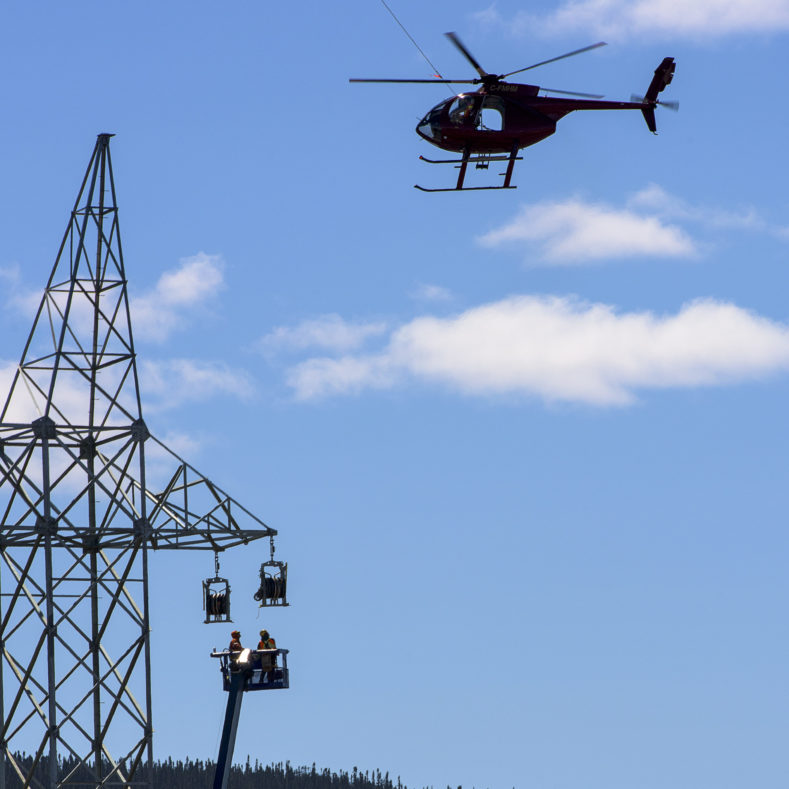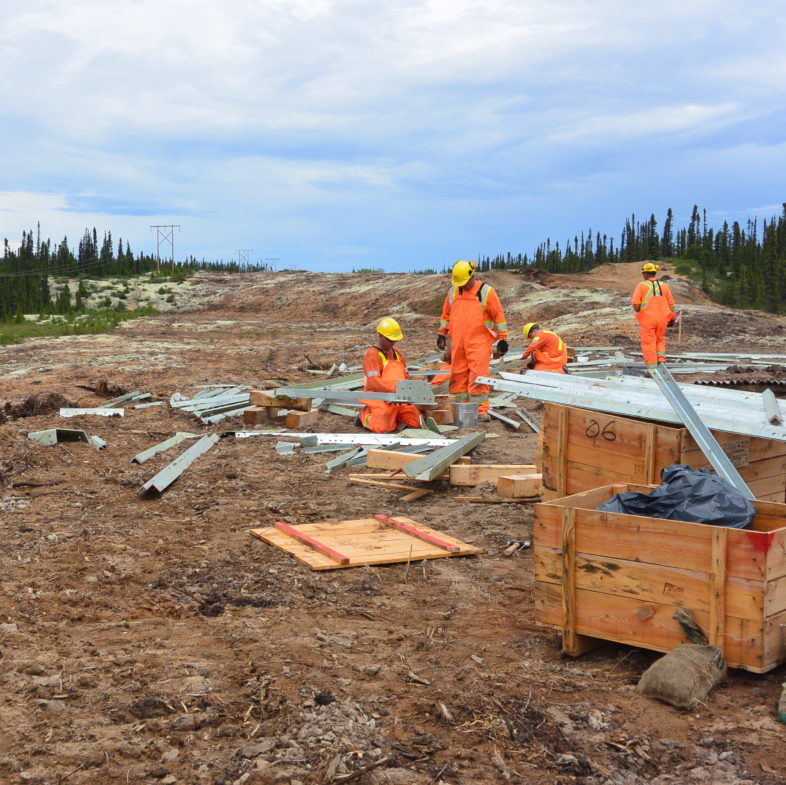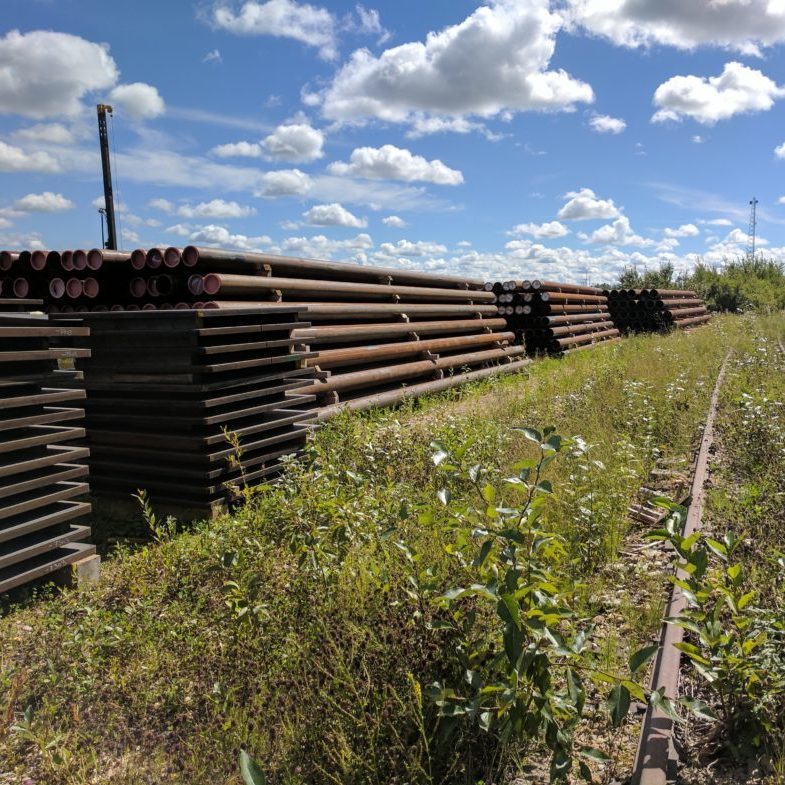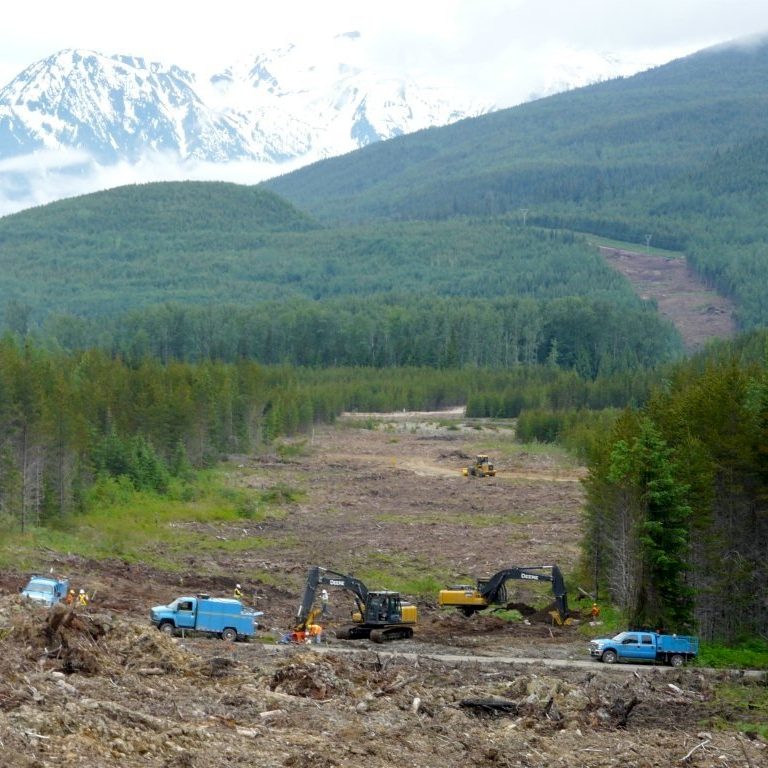-

8
After construction but before the line is energized, the sites will be returned as close as possible to their original ground conditions. This may include, but certainly isn’t limited to, removal of debris, erosion control, and revegetation.
0 -

7
Stringing refers to hanging and fastening the conductor wire to the towers. This can be done with cranes or helicopters.
-

6
Towers are set into place either with cranes or with helicopters, depending on the design of the tower. Some towers are erected as one piece, others are done in multiple pieces. Towers are then secured to the foundation.
-

5
The steel towers are assembled on the ground or in a laydown yard near the tower site. Each part of the tower is built separately and then connected together on site.
-

4
There are two main types of towers that may be built: self-supporting and guyed. Self-supporting towers require foundations for each leg of the tower, while guyed towers require one foundation for the tower, and multiple anchors for the guy wires. After they are set, foundations and
anchors are tested to ensure that they can bear the loads from the tower. -

3
Materials are stored and sorted in material yards offsite, and will be delivered to site as they are required.
-

2
Survey crews stake or flag the locations for the towers using predetermined GPS coordinates. The crew will also determine if the planned tower location is actually viable for installation.
-

1
The first step is to clear a path for the construction of the transmission line. This is known as the Right of Way, or ROW. This stage may consist of logging, mulching and clearing of debris, as well as building roadways to the site.
